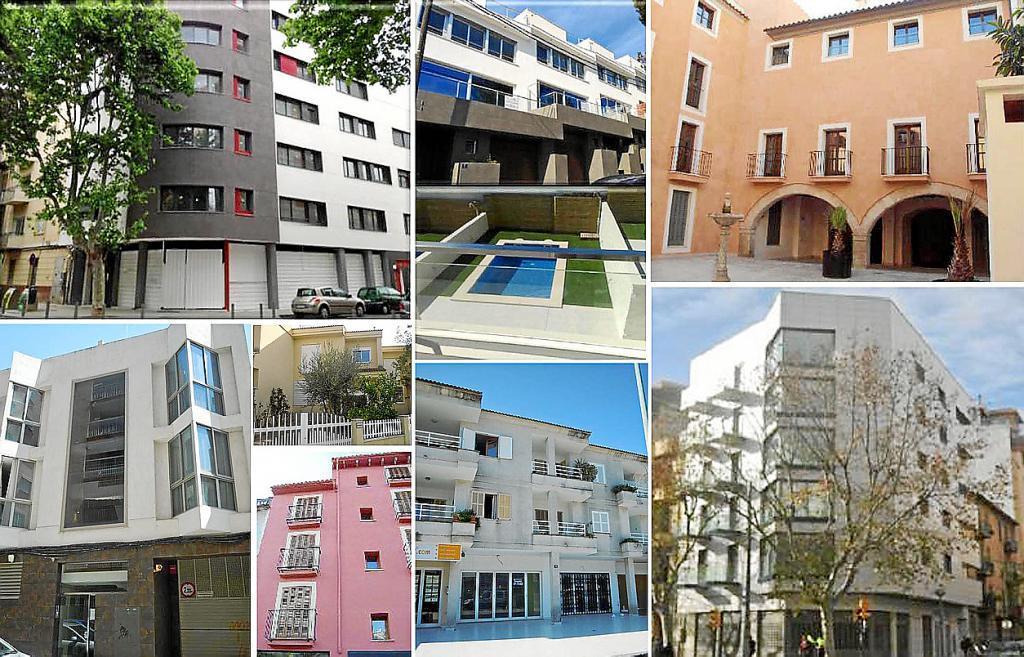There are all sorts of reports into property values, and one of these is provided by ST Sociedad de Tasación, a company which specialises in property valuation. According to its report for the six months from January to June, the price of housing in the Balearics went up by 2.8%, the highest increase in the country.
Based on the price per square metre - the national average having been 1,447 euros - the increase in Spain as a whole was one per cent.
The four regions where prices went up the most - the Balearics, Catalonia, Madrid and Valencia - accounted for 49% of all sales transactions over the six-month period. The percentage price increases in those regions were near to that of the Balearics in two instances - 2.7% and 2.6% in Madrid and Catalonia. In the fourth, Valencia, the rise (1.1%) was only fractionally above the national average.
At city level, the price increase was highest in Barcelona (5.4%). Palma experienced a 3.5% rise, which was joint second highest with Madrid. In Alicante there was a 2.2% rise and in Seville it was 1.9%. Together with Malaga (up by 0.9%), these six cities represented more than fifty per cent of sales in provincial and regional capitals.
The report also includes an index related to salaries and their adequacy for allowing house purchase, which may offer an insight. In three of the four regions where there were the most house sales, salary levels are said to continue to be inadequate for the purchase of an average home. The Balearics is one of these regions. Catalonia and Madrid are two others.
These inadequate salary levels do not prevent the Balearics regularly being identified as the region with the most buoyant property market, and a key factor is the level of foreign buying. The recent BBVA Research report indicated that some 40% of purchases in 2015 were by foreigners, the highest percentage in the country. That report also said that prices in the Balearics rose in 2015 by 6.4%.
Another report - one by Servihabitat, the real-estate arm of Caixabank, which was released in June - suggested that prices in the Balearics would rise by 7% this year. That report also pointed to a 40% figure for foreign purchases.
Yet another analysis - that by the General Council of Notaries - put the percentage of foreign purchases in the Balearics slightly higher at 44%. It also found, and this was back in May, that the British accounted for 20.6% of foreign purchases in Spain as a whole. This was well above the French and German percentages, both below the ten per cent mark.
But how British purchasing will be affected by Brexit was an issue highlighted last week by the Bank of Spain. Its latest economic bulletin pointed to a fall in property investment by the UK market as a potential area of vulnerability for the Spanish economy.


4 comments
To be able to write a comment, you have to be registered and logged in
"But how British purchasing will be affected by Brexit was an issue highlighted last week by the Bank of Spain. Its latest economic bulletin pointed to a fall in property investment by the UK market as a potential area of vulnerability for the Spanish economy." London Evening Standard full page feature on NE Mallorca Property investment 05.10.2016 Brexit & Pound issues but they keep promoting the island.
They certainly love their statistics! Forgetting all those figures and percentages, property prices are driven by supply and demand. The demand here in Mallorca is increasing for foreigners buying property, as coming out of 7 years of recession european buyers are feeling well off - including many Brits, in spite of Brexit. (Anyway the £ has been much weaker - remember £1 =€1?) I believe Pollença and Soller are the Chelsea and Kensington of Spain. Prices are sky high and the usual moan is that the local youngsters cannot afford to buy. Get real! I was 35 before I could get enough mortgage to buy, and although my wife and I were working in London we had to settle for 35 miles away - market forces. The mallorcan grandparents and parents are to blame for the high prices. Demanding mega euros for old wrecks. Gullible foreigners eager to invest will pay anything to be trendy. See how cheap it is to buy in Extremadura! Tourists don't go there. Yes - the times they are a changing! I remember first coming to Spain with the maids and cleaners in smart pinneys, and enduring such poverty. Recently told by a cleaner in Pollença: "We can't get a table at any of the restaurants, as full up with tourists"!
The Euro rate is at 1.12. It will get lower by next year. Any Euro Country, will be seriously affected by this severe drop in the rate. Property owners, are selling, and returning to the UK, whilst they can. I doubt there will be many purchases through the Winter, and throughout next year.
Take note Spain when it comes to brexit you need us